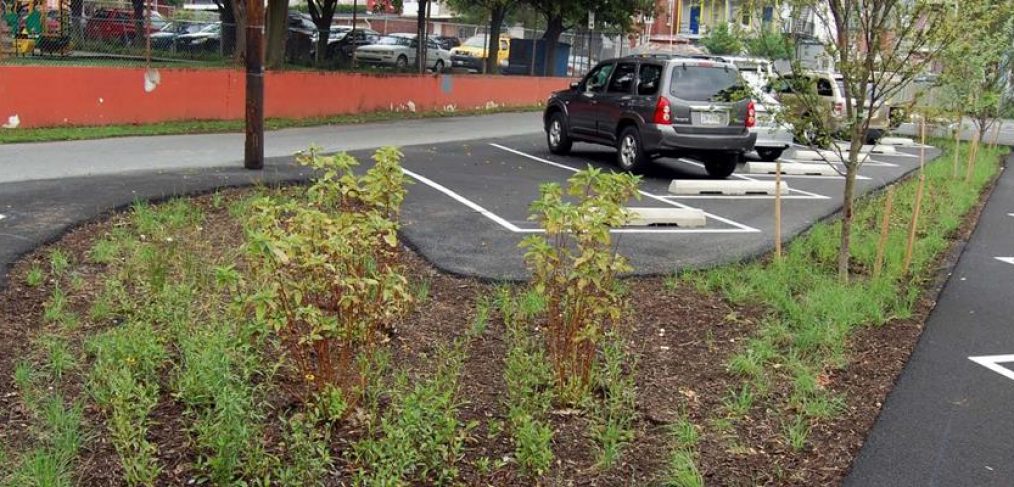
Flooding Protection Via Green Infrastructure
As the rain falls, many communities across the country worry about the very real possibility of flooding. According to the Environmental Protection Agency (EPA), heavy downpours have increased in frequency and intensity over the last 50 years, and are expected to become even more intense as a result of climate change. This raises the likelihood of flooding. The EPA also notes that the average 100-year floodplain is projected to grow by 45 percent by 2100, and the annual damages from flooding may increase by as much as $750 million.
As bleak as that may sound, thankfully there are steps we can take to reduce the number of floods and their intensity through simple changes in the way we manage stormwater.
What is Green Infrastructure?
Green infrastructure (GI) is the use of plants and absorption techniques to capture and transport precipitation and stormwater runoff. It is the opposite of traditional grey infrastructure, which uses drains, pipes, and ditches to take stormwater to a treatment plant or outfall in a stream. GI includes rain gardens, vegetated swales, rain barrels, porous pavement, and other techniques. A good source to learn about these different technologies can be found here: https://www.epa.gov/green-infrastructure/what-green-infrastructure.
How Can It Manage Floodwater?
There are two main types of flooding: localized and riverine. Riverine flooding happens when precipitation overwhelms the capacity of the river channel and the water flows over the river banks. Localized flooding occurs when precipitation overwhelms the stormdrain system, causing stormwater to back-out of the system and into streets, basements, and parking lots.
GI can manage both types of flooding, but for this article we will focus on localized flooding. Technologies like porous pavement allow rainwater to trickle through the pores in the concrete/asphalt, rather than flow over it. The water can then be stored in underground tanks or flow through a filter to slowly re-enter groundwater. Rain gardens act in a similar fashion, where rainwater is slowly absorbed into the ground and into plant roots, rather than flow quickly across traditional pavement into an overwhelmed stormdrain. GI slows the flow and enhances absorption, thus reducing the intensity of potential floods.
Examples
Lancaster City uses GI to manage stormwater in its municipal parking lots. The city has installed a variety of raingardens and biobasins that allow rain to slowly absorb into the ground, rather than flow across the parking lots into stormdrains. By using GI, the city is able to better meet the requirements of its Municipal Separate Storm Sewer System (MS4) permit and reduce localized flooding problems. More at: https://www.epa.gov/green-infrastructure/economic-benefits-green-infrastructure-lancaster-pa.
The City of York has a Green Infrastructure Action Plan to identify opportunities to install the technologies on their parks and open spaces to meet their MS4 requirements, protect the Chesapeake Bay, and improve quality of life for its residents. They prioritized the stormwater best management practices (BMPs) on cost and effectiveness.
Resources
To learn more about the benefits of using GI to reduce flood risks, check out the following sites:



